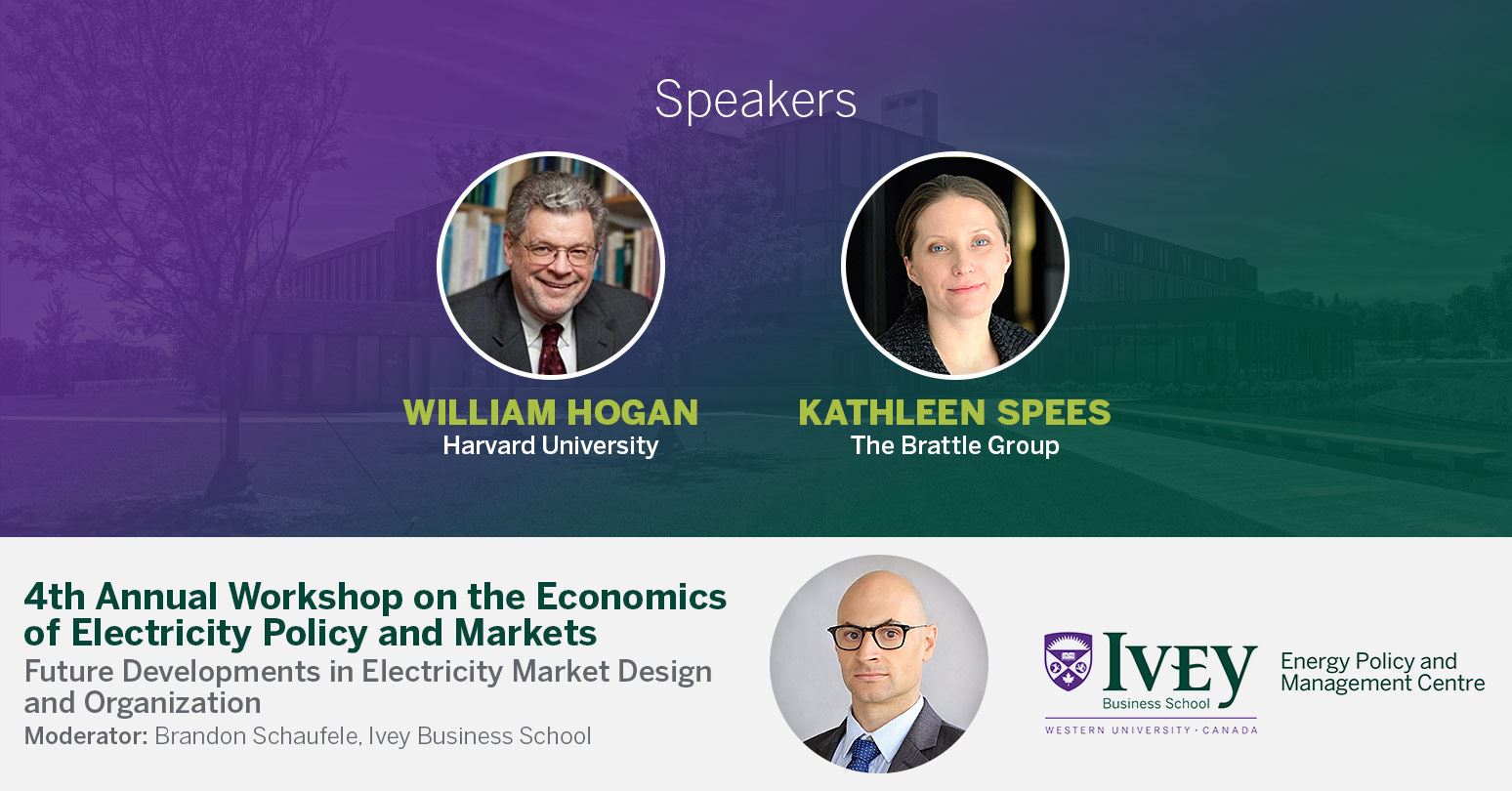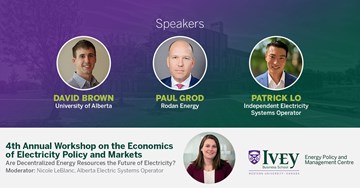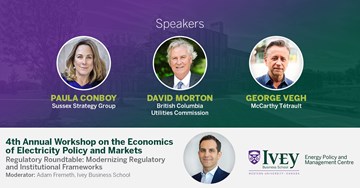Jiya Hai is a Research Assistant at the Ivey Energy Policy and Management Centre and is currently pursuing a dual degree in HBA/Honours Political Science. She relays keynote speakers’ insights as they discuss the future of electricity market design and organization in the final session in the Centre’s annual Workshop on the Economics of Electricity Policy and Markets.
On October 28, in the last of four virtual webinars organized by the Ivey Energy Policy and Management Centre in its fourth annual Workshop on the Economics of Electricity Policy and Markets, participants from industry, government, and academia considered the future of electricity market design and organization. The session was hosted by Brian Rivard, Director of Research for the Ivey Energy Centre, and moderated by Brandon Schaufele, an Associate Professor of Business, Economics, and Public Policy at Ivey.
The everlasting importance of fundamentals
William Hogan, the Raymond Plank Research Professor of Global Energy Policy at Harvard University’s John F. Kennedy School of Government, argued that electricity market design cannot escape certain fundamentals. He said this was true regardless of changes in the electricity sector, megaprojects, and distributed energy resources (DERs). A common mistake Hogan pointed out was people’s belief that market design could begin with the forward market without specifying the rules and prices that would apply in real time. Instead, he said that good design begins with the real-time market and works backward, because all energy delivery takes place in the real-time market. Market participants have discretion and choices, meaning they will anticipate and make forward decisions based on expectations and real-time prices. Hogan also pointed out that basic efficiency principles still applied in a thought experiment involving a no-carbon/zero-variable-cost green energy supply. Considering the U.S. Federal Energy Regulatory Commission’s framework for DERs, Hogan said that key market design challenges moving forward would include product definition, co-ordination, efficiency (optimization) and pricing, and intertemporal optimization and efficiency.
The clean energy transition
Kathleen Spees, a Principle at The Brattle Group, said the clean energy transition was happening, with or without markets. She said this was principally due to customers exercising greater agency and control over their preferences, as well as the advantages of new technologies. Spees said that two major shifts would be the reduction of economy-wide greenhouse gas emissions through policy- and customer-driven electrification, and the supply mix moving toward “non-traditional” resources for economy-wide energy. Using the example of New York, she examined how a transition to zero-emissions generation might include minimal curtailments due to short- and long-term balancing, wind and solar becoming primary sources of energy, and gas-fired generation falling and eventually switching to zero-emission fuel sources (e.g. renewable natural gas). Spees emphasized that flexible supply and customers, activated by proper market signals, would be necessary for a carbon-free grid. Unlike current markets, which are designed for dispatchable thermal plants and inelastic demand, Spees said that new markets would empower customers to meet their own carbon objectives and mobilize the grid with a wider array of tech-enabled services.



